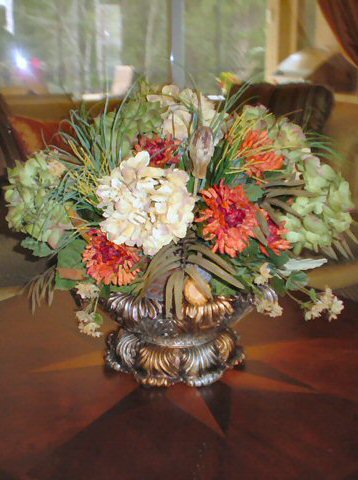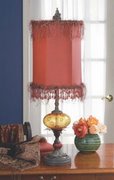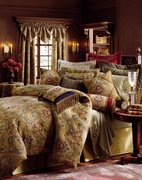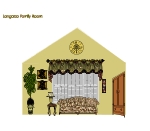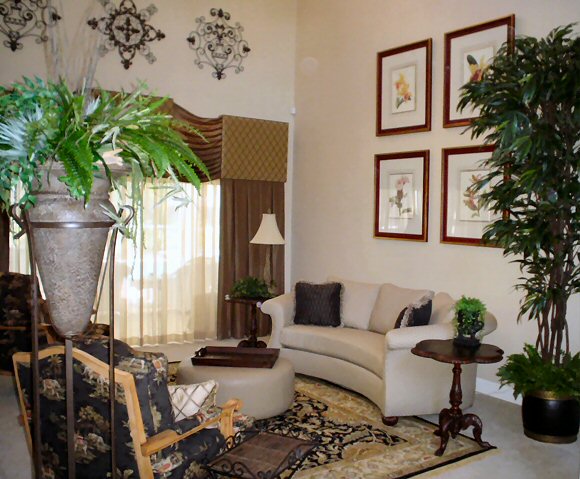Collage a Kitchen Backsplash Using Resin
 This is going to take all of you in a whole new direction, train of thought, forward idea of what you can do. Your options are endless on this one. That is why I love it so much. By the way, remember the glass tile blog? If you couldn't afford to tile your entire backsplash, how about this technique?...add some tile and GO!
This is going to take all of you in a whole new direction, train of thought, forward idea of what you can do. Your options are endless on this one. That is why I love it so much. By the way, remember the glass tile blog? If you couldn't afford to tile your entire backsplash, how about this technique?...add some tile and GO!
I am including the links you'll need to watch the video and to cruise HGTV's site. click on the word "comments" at the bottom of this entry if you have any questions, comments, etc. You'll see a small image of an envelope next to the word. Thanks!
This is definitely something you should press the PRINT button for......here goes
 Embed your favorite household objects in a backsplash of clear resin to create a wow-worthy 3-D collage.
Embed your favorite household objects in a backsplash of clear resin to create a wow-worthy 3-D collage.
http://design.hgtv.com/kitchen/Video_detail.aspx?id=790 Click here for the Video
Step by Step Instructions
Materials List:large sheets of paper or cardboard to use as a template
silverware or other small household objects(sea shells, key collection, broken bits of pottery,etc)
resin and catalyst (available at art supply stores)
1/4" lauan plywood to fit the footprint of your backsplash (available at lumber companies)
colored laminate to fit the footprint of your backsplash -I am including some examples and a link for laminates at the bottom of the page
http://www.countertop.com/products/listcategoriesandproducts.asp?idcategory=28&curPage=1&View=All
1" x 2"s to create the form
nails
drinking straws to hold the space for your mounting hardware (how many will depend on the size of your backsplash)
1 can of cooking spray
finish screws and grommets
construction adhesive
Tools:
pencil with eraser
measuring tape
jigsaw
Step by Step:
1. Measure the dimensions of your backsplash. Using a large sheet of paper or cardboard, transfer the measurements to the paper, then use scissors to cut a template. Set the template in place and tweak it until it fits the backsplash area perfectly.
2. Lay the template over the lauan plywood and transfer the measurements. Use the jigsaw to cut out a footprint of your backsplash from the lauan. Use safety precautions when cutting the plywood.
3. To add a dash of color, layer a piece of laminate over the plywood (we used bright red). Using the same template, transfer the footprint of the backsplash onto the laminate then cut the laminate with the saw, exercising safety precautions. Lay the laminate over the plywood.
4. Nail together the 1" x 2"s create a frame around your backsplash's footprint so your resin will have a place to pool.
5. Since this is a heavy project, we recommend securing the backsplash into the wall studs. Find them with a stud finder (available at hardware stores), then mark the measurements on the laminate.
6. Drill holes where you will put your mounting hardware, then insert clear drinking straws upright in the holes. As you pour the resin, it will dry around the straws, giving you a channel through which you can easily insert your hardware.
7. Spray the form with cooking spray to make it easier to remove the backsplash.
8. Wearing safety gear and working in a well-ventilated area, measure out the resin and add the hardening catalyst. Mix thoroughly according to the manufacturer’s directions.
9. Fill the mold about one-third full, then wait about 25 minutes to let it harden to a jelly-like consistency.
10. Place the silverware or other objects in the resin. (sea shells, glass tile, etc)
11. Pour a second layer of resin, repeating the same process as for the first. Don’t overfill the mold. In all, our mold took three layers of resin to complete.
12. Let the mold cure for 24 hours. The mold should make a clicking sound when tapped and should not be tacky to the touch. Remove the form.
13. Apply construction adhesive to the back of your resin backsplash according to the manufacturer's instructions. Put the backsplash in place.
14. Install the finish screws and grommets in the holes created by straws.
The link for the Wilsonart laminates. There are hundreds of laminate options these days. Don't limit yourself!
http://www.countertop.com/products/listcategoriesandproducts.asp?idcategory=28&curPage=1&View=All
Have fun with your laminate too. Make it coordinate with the theme of your collection...here are a few examples. The burlwood look below would be great for the background of miniature cast iron kitchen utensils etc. The green would be fabulous for and antique(reproductions ofcourse) skeleton key collection. the yellow could work with some "neon" colored spatulas and things of that nature. The blue could represent the ocean in a seashell collection. Use your imagination. Find inspiration in the items you love to collect.



















 If you have the eye for accessorizing then I suggest you get busy. If you don't then interview a few designers in your area. See who is willing to work with you on creating the finishing touches on your home. Remember also, you do not have to go into a 2nd mortgage on your home to accomplish a great look. Decide on a price range before you hit the stores.
If you have the eye for accessorizing then I suggest you get busy. If you don't then interview a few designers in your area. See who is willing to work with you on creating the finishing touches on your home. Remember also, you do not have to go into a 2nd mortgage on your home to accomplish a great look. Decide on a price range before you hit the stores.






